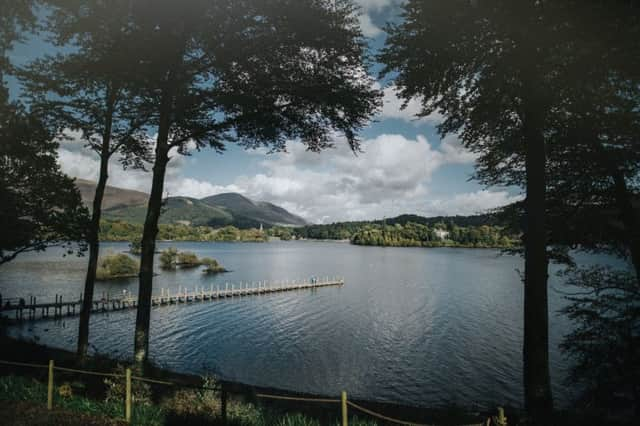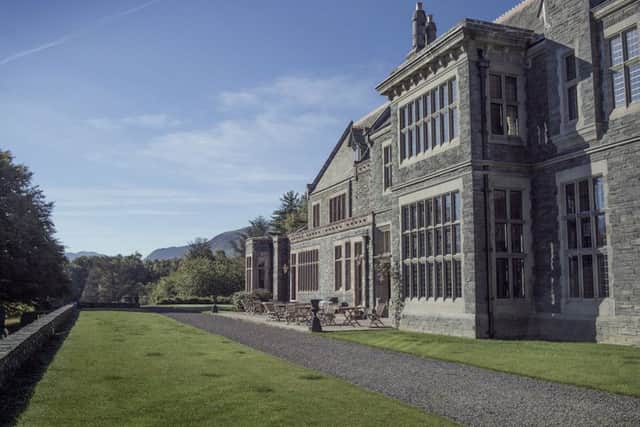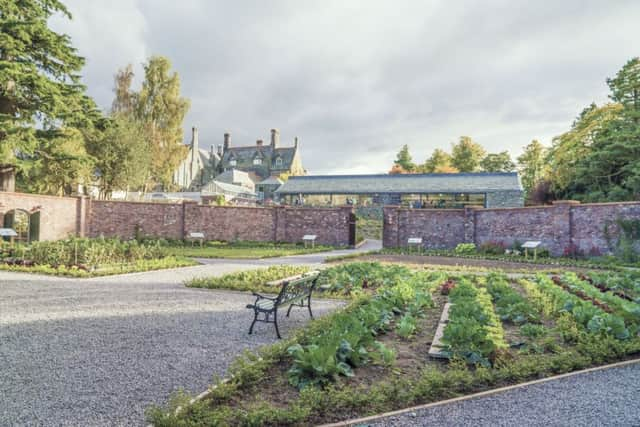Travel: On the trail of Peter Rabbit, Lingholm, Lake District


As the $50m Peter Rabbit movie heads our way (it opens nationwide on 16 March), the question is of more than academic interest. The “real” Mr McGregor’s vegetable garden – where Peter Rabbit was chased and nearly killed by the angry gardener – could be worth quite a bit to its owner.
Was it somewhere in Scotland? McGregor is an obviously Scottish name, and the story “about four little rabbits whose names were Flopsy, Mopsy, Cottontail and Peter” did indeed begin here, with a letter from Potter to her governess’s five year-old son that she wrote in 1893 while staying in Dunkeld.
Advertisement
Hide AdAdvertisement
Hide AdBut the real Mr McGregor’s garden, Potter said near the end of her life, wasn’t there. Nor was it Hill Top, her house in Near Sawrey, in the middle of the Lake District, and the inspiration for so many of her tales. Although it is well worth seeing, and although you should also check out the Beatrix Potter Gallery at nearby Hawkshead to get an idea of the anatomical precision of her art, those National Trust properties are usually crowded and seeing both will set you back £18.50 for an adult and half that for a child. And even then you still won’t have seen the garden where Mr McGregor, having already turned Peter Rabbit’s dad into a pie, tried so hard to do the same to his long-eared, blue-coated son.


For that, you have to head north to Lingholm, a Victorian pile three miles south-west of Keswick with spectacular views over Derwentwater. This isn’t the film set for the 3D live action animated comedy (like the Paddington films, in other words) in which James Corden voices Peter Rabbit as he does battle with Domhnall Gleeson’s Mr McGregor. Instead, it’s the real thing.
“If the vegetable garden and wicket gate were anywhere,” Beatrix Potter wrote to her publisher in that 1942 letter, “it was at Lingholm near Keswick”. But, she added, it was pointless looking for it, as it had been altered out of recognition.
All of this was known – albeit only to a small coterie of Potter fans – when David Seymour, a genial Bradford-born businessman who made his money selling products to the building trade, bought Lingholm in 2013. All the Potter biographies mentioned the ten summer holidays – up to four months at a time – that Beatrix Potter stayed at Lingholm between 1885 and 1907. She clearly loved the place: it’s one of the few buildings she ever painted. She also painted a portrait of her pet rabbit Peter there in 1899 (she’d taken him with her on the train from London), and wrote The Tale Of Squirrel Nutkin there two years later, setting it on the estate’s woods and on its shoreline. The Tale Of Mrs Tiggy-Winkle, about her pet hedgehog (who’d also come up with her by train) was written at Lingholm on that same holiday.
But although the Potter experts knew all about Lingholm’s importance to her, the rest of the world didn’t.


Seymour determined to change that. After he bought the estate, he cleared the overgrown vegetable garden and restored it to what it looked like in Beatrix Potter’s day. A fairly primitive hut selling basics was replaced in 2016 by a stylish café overlooking the new/old garden which sells bread, cakes and biscuits baked on the premises. Admission to the walled garden is free, which for a Lake District tourist venue must be a first.
It’s not a Beatrix theme park, he insists. But suppose you want to wander down to the shoreline to see where she imagined Squirrel Nutkin sailing off to Owl Island, or explore the truly spectacular Newlands Valley (“the last great unspoilt valley in the Lake District”, Seymour claims) where Potter used to sketch and where she imagined Mrs Tiggy-Winkle living, you can still catch that frisson that can be found everywhere that a writer has turned observable reality into fantasy.
Lingholm has, of course, changed since Potter stayed there. It’s opened up, become democratically more affordable: at low season four people can stay in a self-catering flat in the main house – where one of the bedrooms was Potter’s painting studio – for less than £30 per person per night. The estate has 11 different kinds of self-catering accommodation, from a six-bedroom detached house with private grounds leading down to the lakeside to luxurious modern cottages in the grounds. You’ll see pheasant, heron, deer (especially in the woods in the morning) and a huge variety of wildlife.
Advertisement
Hide AdAdvertisement
Hide AdIf you do see a rabbit wearing a blue coat being chased by either a fox or a gardener, though, don’t bother mentioning it. That story’s already been written.


FACT FILE
Lingholm Estate has 11 high-quality self-catering apartments ranging from two-bedroom apartments in the main house (including one Beatrix Potter used as her studio) to six-bedroom detached houses. Prices for a four-person main house flat range from £309 for a four-day midweek stay in low season to £883 for a week in high season and from £1,596 to £2,225 for a weekend in a house sleeping 12. More details on thelingholmestate.co.uk, [email protected] or 01768 774238.